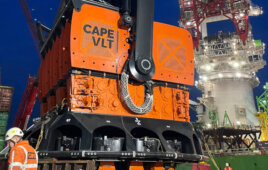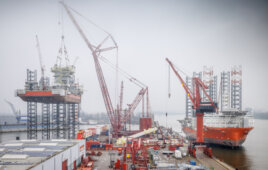
Recent testing during actual events and simulated duty cycle tests showed that the MetAir Ranger battery life exceeded the 72-hour requirement by 50% or 36 hours.
A developer of advanced and portable power systems has announced the availability of its MetAir Ranger series for on-demand back-up power in off-grid and emergency applications. While the company says it offers the highest energy density of any commercially available primary battery at the lowest cost per kilowatt hour, the battery has received independent validation that it surpasses the industry’s 72-hour emergency preparedness benchmark, according to the company. The system is said to have hit an unprecedented 108 h – four and a half days – of instantly accessible emergency power.
“In field tests, the portable zinc-air power system exceeded our performance expectations,” says Tracy Lenocker, Mountain Division Chief, Office of Emergency Services, San Bernardino County Fire Department. “For mission critical applications using amateur and commercial radios we need at least 72 hours of battery run-time. Recent testing during actual events and simulated duty cycle tests showed that the MetAir Ranger battery life exceeded the 72-hour requirement by 50% or 36 hours. That’s 108 hours or four and a half days of constant, hassle-free portable energy. With a long shelf life that guarantees readiness in emergency situations, this reliable back-up power source helps alleviate worries associated with the need for constant re-charging of traditional secondary batteries.”
The 3.2-kWh battery weights less than 25 lb, yields energy densities of 352 Wh/kg and costs less than $200/kWh. The company says the battery uses the developer’s proprietary cathode technology. While one MetAir Ranger system is about the size of a single deep cycle lead acid battery, it is roughly half the weight and has 11 times the equivalent energy per kilogram. It is also designed to easily accept replaceable power cartridges once the initial system is “air” activated and used. The battery is essentially a “plug and play” box of portable energy and requires no external energy sources to stay charged. The battery has an optional 150W, 110-Vac inverter with two outlets and a USB charging port. The battery contains no hazardous materials or combustible fuels and, unlike large format Lithium batteries, is approved for transport by the Department of Transportation as non-hazardous material.
In comparison to the commonly available battery types used today, such as lithium-ion, nickel metal hydride and lead acid, QSI’s technology is based on a safe and proven zinc-air battery chemistry that is cost effective to manufacture and easy to use. Zinc-air batteries are
electro-chemical batteries powered by oxidizing zinc metal powder (a non-combustible, non-toxic and abundant domestic material) with oxygen from the air to generate an electrical current. In addition, zinc-air batteries have high energy densities and an unprecedented shelf life of up to 10 years before initial use. Sizes range from small button cells for hearing aids, mid-size for remote portable power applications, to large systems for electric vehicle propulsion.
QuantumSphere
www.qsinano.com
Filed Under: Energy storage, News




